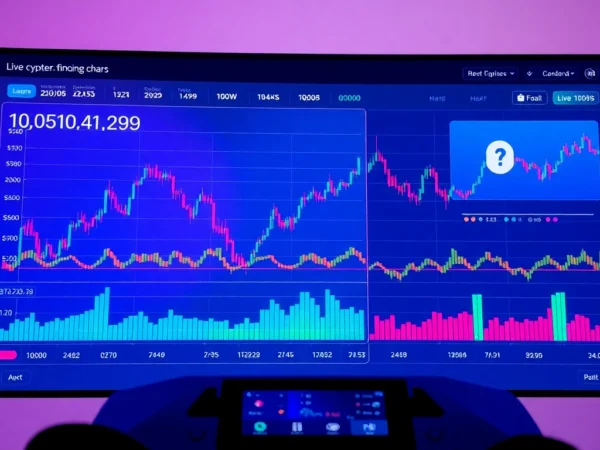Mastering Trading Updates: Strategic Insights for Investors and Traders
Understanding Trading Updates and Their Market Impact
Trading updates serve as vital indicators for investors and traders seeking to navigate the complexities of financial markets. These updates encompass a broad spectrum of information, from earnings reports and economic data releases to geopolitical developments and central bank decisions. Recognizing the types and significance of trading updates allows market participants to anticipate potential shifts in market sentiment and price action. For example, a sudden decline in corporate earnings or unexpected economic data can trigger volatility and prompt strategic adjustments.
1.1 Definition and Types of Trading Updates
Trading updates refer to timely disclosures or reports that provide insights into market conditions, company performances, or economic indicators. These can be categorized into several key types:
- Earnings Reports: Quarterly or annual disclosures from companies regarding profits, revenues, and future outlooks. They often influence stock prices significantly.
- Economic Data Releases: Indicators such as GDP growth, unemployment rates, inflation figures, and manufacturing indices that reflect macroeconomic health.
- Central Bank Announcements: Interest rate decisions, monetary policy statements, and forward guidance that impact currency and bond markets.
- Geopolitical Events: Political elections, trade negotiations, or conflicts that can cause market uncertainty or volatility.
- Market Sentiment Reports: Investor surveys and options market signals that gauge risk appetite and future expectations.
1.2 How Trading Updates Influence Market Trends
Market trends are highly sensitive to the influx of new information provided by trading updates. Positive reports—such as strong earnings or favorable economic data—often lead to bullish momentum, attracting investors and driving prices upward. Conversely, negative data can trigger corrections, sell-offs, or increased volatility. For instance, during earnings season, stocks tend to experience heightened swings as traders digest company reports. The rapid dissemination of trading updates allows markets to adjust swiftly, reflecting current fundamentals and sentiments. This dynamic underscores the importance of real-time information flow in maintaining efficient markets and facilitating informed decision-making.
1.3 Key Sources for Reliable Trading Information
Access to accurate and timely trading updates is essential for sound decision-making. The most reputable sources include:
- CNBC: Known for real-time market coverage, CNBC provides comprehensive financial news, earnings reports, and expert analysis.
- MarketWatch: Offers in-depth stock quotes, economic data, and market commentary from global financial markets.
- Reuters: A trusted source for breaking international news, including geopolitical developments influencing markets.
- Nasdaq: Focused on tech stocks and market data, providing detailed updates on indices and individual securities.
- Yahoo Finance: Combines news, charts, and analysis, useful for tracking real-time market movements.
Implementing Effective Trading Updates in Your Strategy
2.1 Tools and Platforms for Real-Time Updates
To leverage trading updates effectively, traders must utilize reliable tools and platforms. Real-time data feeds, such as Bloomberg Terminal, Thomson Reuters Eikon, or subscription-based news aggregators, offer instantaneous updates essential for swift decision-making. Additionally, many online brokerage platforms integrate live news feeds and alerts, enabling traders to respond promptly to market-moving information.
Mobile applications like Investing.com and CNBC App also provide push notifications for breaking news, economic releases, and earnings reports, ensuring traders stay informed on the go.
2.2 Integrating Trading Updates into Technical and Fundamental Analysis
Successful trading strategies incorporate trading updates into both technical and fundamental analysis frameworks. Fundamental analysis involves evaluating economic data, earnings, and geopolitical events to forecast long-term trends, while technical analysis focuses on patterns, charts, and price actions for timing entries and exits.
– For fundamental analysis, incorporating upcoming economic releases or earnings reports can help traders position themselves ahead of anticipated market shifts.
– For technical analysis, news triggers can be used to confirm breakouts or to identify support and resistance levels.
2.3 Timing and Decision-Making Based on Market Movements
Timing is critical when responding to trading updates. Traders must assess the nature of the news—whether it’s anticipated or surprising—and the context within broader market conditions. For instance, a positive earnings surprise may lead to immediate gains, but excessive optimism could also result in short-term overbought conditions.
Algorithmic trading systems increasingly incorporate news sentiment analysis and event calendars to execute trades swiftly post-update, reducing latency and emotional bias. Developing a disciplined approach to decision-making—such as setting predefined reaction thresholds—can mitigate impulsive reactions and improve overall profitability.
Best Practices for Analyzing Trading Updates for Profitability
3.1 Recognizing Market Volatility Signals
Market volatility often spikes around significant trading updates. Recognizing these signals requires monitoring indicators such as the VIX Index and implied volatility metrics. Sharp price swings following news releases indicate heightened uncertainty, which can be exploited or avoided depending on a trader’s risk tolerance.
3.2 Avoiding Common Pitfalls and Overreactions
One of the major pitfalls in trading updates is overreacting to short-term noise or misinformation. Relying solely on one update without considering the broader context can lead to costly mistakes. To avoid this, traders should corroborate updates with multiple sources, assess market sentiment, and consider technical support and resistance levels before executing trades.
For example, a sudden drop in a stock after a negative earnings report might be an overreaction if broader fundamentals remain strong. Practicing patience and data validation is essential for sustainable profitability.
3.3 Case Studies of Successful Trading Responses
A notable case involved the 2020 market rebound during the COVID-19 pandemic. Traders who closely followed economic data and Federal Reserve announcements were able to identify opportunities to buy undervalued assets amidst the chaos. Conversely, traders who ignored these updates missed critical turning points.
In another instance, companies that swiftly communicated positive earnings surprises saw their share prices spike, rewarding investors prepared with timely data and analysis.
Enhancing Transparency and Timeliness in Trading Updates
4.1 Innovations in Market Data Delivery
The finance industry continually innovates data delivery through AI-powered news aggregation, machine learning algorithms, and blockchain-based verification systems. Instantaneous, tamper-proof updates help reduce misinformation and improve transparency, giving traders an edge over the competition.
4.2 Ensuring Data Accuracy and Integrity
Accurate data is vital for reliable trading decisions. Sources must adhere to rigorous verification processes, and platforms should implement audit trails to ensure integrity. When discrepancies occur, traders need mechanisms to verify facts quickly to avoid acting on false information.
4.3 Leveraging AI and Automation for Trade Assistance
Artificial Intelligence plays a central role in automating the analysis of trading updates. Sentiment analysis algorithms interpret the tone and implications of news, while automated trading systems execute strategies based on predefined criteria. These innovations significantly reduce reaction times and help traders capitalize on opportunities while managing risks more effectively.
Monitoring Performance and Adapting Trading Update Strategies
5.1 Tracking Key Metrics and Outcomes
Evaluating the effectiveness of trading based on update analysis involves monitoring metrics such as win/loss ratios, average profit per trade, and drawdowns. Using analytical tools and backtesting strategies allows traders to refine their approach continuously.
5.2 Continuous Learning and Strategy Refinement
Markets evolve, and so should trading strategies. Regular review of trading outcomes, staying updated with new data sources, and attending industry seminars are essential for maintaining competitive advantage.
5.3 Staying Ahead with Market Outlook and Trend Forecasts
Forward-looking tools such as AI-driven trend forecasts and macroeconomic models help traders anticipate upcoming market conditions. Incorporating these insights into trading plans ensures preparedness for future volatility and sustained performance.










